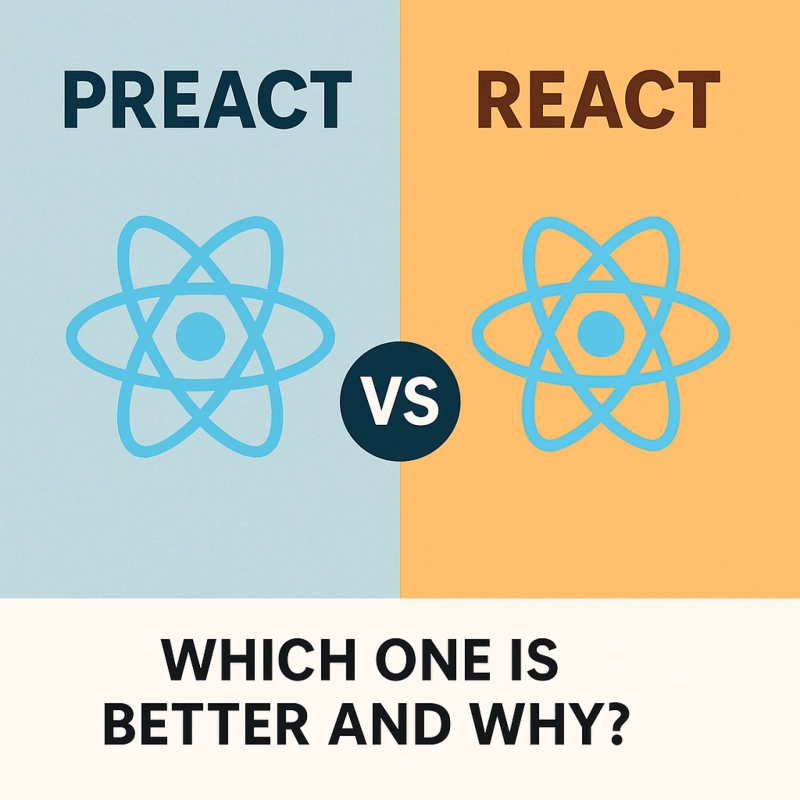When it comes to building modern web applications, React has long been the go-to library. But in recent years, Preact has emerged as a lightweight alternative that offers similar functionality with a smaller footprint. Both have their strengths, and choosing between them depends on your project requirements. Let’s dive deeper into the comparison.
What is React?
React, developed by Meta (formerly Facebook), is a powerful JavaScript library for building user interfaces. It’s widely adopted, supported by a massive ecosystem, and offers robust tools like React Router, Redux, and Next.js for building large-scale applications.
Key Features of React:
- Large community and ecosystem
- Rich set of libraries and integrations
- Virtual DOM for efficient rendering
- Backed by Meta and widely used in production apps
What is Preact?
Preact is a lightweight alternative to React, designed to deliver the same functionality with a fraction of the size. At just 3KB gzipped, Preact is ideal for performance-focused projects like PWAs (Progressive Web Apps) and mobile-first applications.
Key Features of Preact:
- Extremely small and fast
- API compatible with React (with preact/compat)
- Great for resource-constrained environments
- Excellent for performance-critical apps
Preact vs React: The Key Differences
1. Size and Performance
- Preact: Just 3KB, making it lightning-fast and perfect for mobile and low-bandwidth scenarios.
- React: Around 30+ KB, heavier but still optimized for large-scale apps.
2. Ecosystem and Community
- React: Has a huge ecosystem, countless libraries, plugins, and tutorials.
- Preact: Smaller community but compatible with many React libraries via preact/compat.
3. Use Cases
- Preact: Ideal for PWAs, lightweight apps, or when performance is the top priority.
- React: Better suited for enterprise-grade apps, complex dashboards, and applications needing large-scale integrations.
4. Learning Curve
Both have similar APIs, so if you know React, switching to Preact is easy.
Which One is Better and Why?
- Choose React if your project is large, requires a mature ecosystem, and you need stability with long-term support. Its wide adoption ensures more resources, community support, and third-party tools.
- Choose Preact if you’re building a smaller, performance-focused app where every kilobyte matters. It’s also a great option if you want React-like features but with minimal overhead.
Final Verdict
Neither Preact nor React is inherently "better" it all comes down to your project’s goals. React shines in large, complex applications with extensive requirements, while Preact wins in speed, size, and efficiency for lightweight apps.
In short:
- For scalability and ecosystem → Go with React.
- For speed and performance → Go with Preact.


